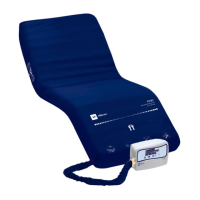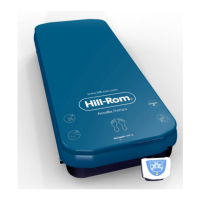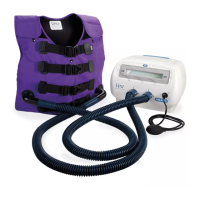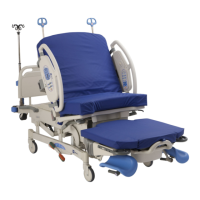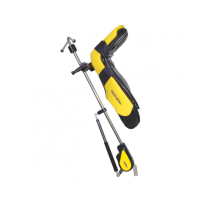Technical Specifications
98 Progressa® Bed Instructions for Use (171528 REV 9)
WIRELESS CONNECTIVITY SPECIFICATIONS
The Wireless Connectivity module supports these security protocols:
Standards
• Wireless Equivalent Privacy (WEP)
• Wi-Fi Protected Access (WPA)
• IEEE 802.11i (WPA2)
Encryption
The Wireless Connectivity module supports these encryption protocols:
• Wireless Equivalent Privacy (WEP, RC4 Algorithm)
• Temporal Key Integrity Protocol (TKIP, RC4 Algorithm)
• Advanced Encryption Standard (AES, Rijndael Algorithm)
• Encryption Key Provisioning Static (40-bit and 128-bit lengths)
•Pre-Shared (PSK)
• Dynamic 802.1X
Encryption Options
•Off
•On
•Auto
•PSK
•WPA-TKIP
•WPA2-PSK
• WPA2-AES
•CCKM-TKIP
• CCKM-AES
• WPA-PSK-AES
• WPA-AES
For transmitters rated at a maximum output power not listed above, the recommended separation distance d in
metres (m) can be estimated using the equation applicable to the frequency of the transmitter, where P is the maxi-
mum output power rating of the transmitter in watts (W) according to the transmitter manufacturer.
NOTE 1: At 80 MHz and 800 MHz, the separation distance for the higher frequency range applies.
NOTE 2: These guidelines may not apply in all situations. Electromagnetic propagation is affected by absorption and
reflection from structures, objects and people.
Recommended Separation Distances between Portable and Mobile RF
Communications Equipment and the P7500 Model
The P7500 is intended for use in an electromagnetic environment in which radiated RF disturbances are controlled.
The customer or the user of the P7500 can help prevent electromagnetic interference by maintaining a minimum dis-
tance between portable and mobile RF communications equipment (transmitters) and the P7500 as recommended
below, according to the maximum output power of the communications equipment.
Rated maximum output
power of transmitter,
W
Separation distance according to frequency of transmitter, m
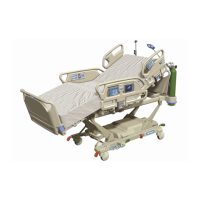
